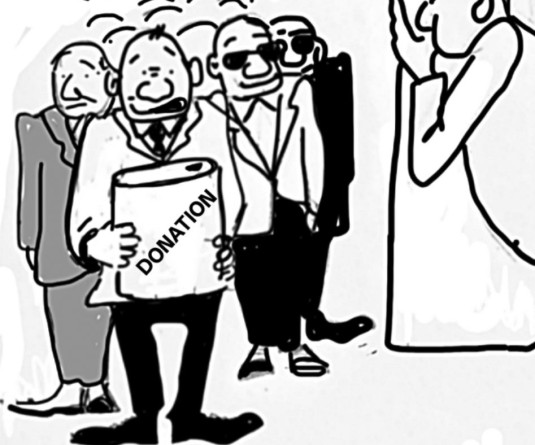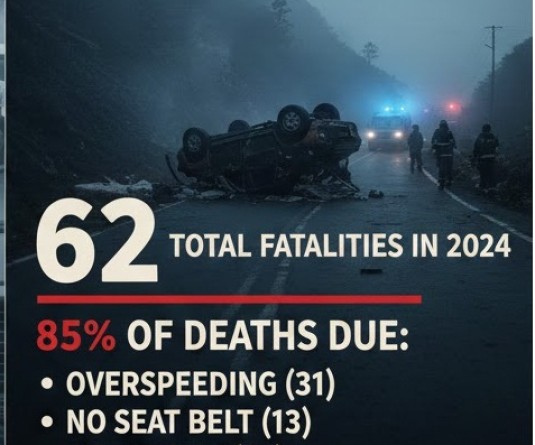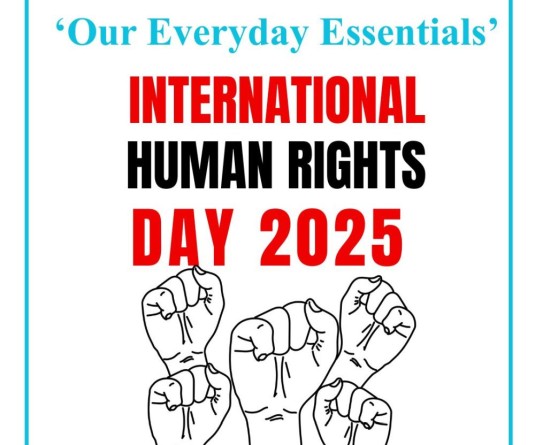Literature enthusiasts interacting with Tim Tomlinson, Professor of Writing at New York University's Global Liberal Studies Program, Co-founder of New York Writers Workshop & author of several books, and his wife during their visit to Nagaland at The Book Home, Kohima in June 2024.

‘What will remain of us is what our writers and storytellers record today’
Vishü Rita Krocha
Kohima | December 30
While it was considered only a dream just a few years ago to participate in prestigious literary events such as the Jaipur Literature Festival, New Delhi World Book Fair or the Sahitya Akademi Festival of Letters, the year 2024 began with some prominent literary names from Nagaland being invited to participate in some of the biggest national literary platforms, clearly indicating that Naga Literature has come a long way from where it first began.
“Although none of the above made front page news in our local papers, these are remarkable achievements that deserve to be acknowledged because it shows how far we have come, and that we are now contributors to the growing literary scene not only in our state but also in the Northeast region and the nation as well,” remarked Independent Researcher & Editor, Vizovono Elizabeth.
.webp)
Tomorrow when we are gone, she underscored that, “what will remain of us is what our writers and storytellers record today.” Despite literature in the state not receiving “the kind of patronage that music (for example) enjoys” and has also never been popular among the public, she asserted that, “the fact that Naga writers are now brushing shoulders with and sharing panels alongside the literary luminaries of the nation is to be lauded.”
This, she further noted, “is all through the sheer passion and determination of the individual literary enthusiasts” while emphasizing that, “all credit goes to the creative and hard-working writers who made it on their own.”
‘Lack of funding & resources could hinder the growth of Nagaland’s literary scene’
“If we can achieve this much even on our own, how much more will our literature thrive with institutional and governmental support,” she further posed while highlighting that “the lack of funding and resources is an area that could hinder the growth of Nagaland’s literary scene.”
Pointing out that, “we still have a long, long way to go,” she however stated that, “in spite of it all, I am proud to say there are people looking to us for inspiration.”
Vizovono Elizabeth further expressed concern that currently there is no proper literary ecosystem in place. While books are getting published, she observed that publishers hardly have distributors and booksellers to sell beyond the local market. “We really need interconnected businesses to build a community that will sustain,” she stated in this regard.
“I also wish there are some initiatives instituting separate funding or scholarships/fellowships for writers for both creative as well as research projects,” she expressed while pointing out that there are no residencies for writers either. “Since there are at least five universities in Nagaland, some of them could institute such programs. The government/social organizations could also be more proactive in encouraging the documentation of our stories,” she suggested.
.webp)
‘Overall, a very good year for writers and literary enthusiasts’
But overall, she noted that 2024 has been a very good year for writers and literary enthusiasts, marked with an exciting beginning, a flurry of literary events and book launches throughout the year apart from Naga authors making their presence felt at every literary festival in the Northeast region and ending with, in her words— “a cherry on top - the news of Easterine Kire’s Sahitya Akademi Award for best fiction in English for her novel Spirit Nights.”
The highlights of the year, she added, “were the introduction of The White Owl Literature Festival and Book Fair in February, bringing world class literature to our doorstep and the 4th edition of Nagaland Literature Festival held recently in November, promoting and providing a platform for Naga writers and storytellers.” “Both these are necessary for our literature to grow and I hope that they will continue to spread wings together,” she commented.
Stating that there is a growing interest and awareness about Naga literature with so many new books getting published over the last few years, she also observed that a lot of the new writings focus on personal stories and contemporary social issues while terming Literature a powerful tool for addressing social concerns.
Remarking that there is also great interest in going back to tracing our history and roots, she stated belief that, “our culture and oral traditions will continue to be an inspiration for writers even as we explore themes of identity, culture and our place in history.” Writers, she underscored, “will play a crucial role in documenting and preserving our rich cultural traditions including our folklore, myths, and legends.”
Another welcome addition, she highlighted is the gradual increase in writings in the vernacular Naga languages while emphasizing that “this needs to be encouraged by all tribal literature boards.” “And hopefully in future, such writings will be translated into English and other languages to share our stories across cultures,” she put across.
‘Promising future for Naga Literature’
While the declining reading culture in this digital age is a legitimate concern, Sentilong Ozukum, civil servant, author & screen writer, however feels that there are several reasons to remain optimistic. Even as he views the future of Naga literature with a mixture of concern and hope, he underscored that, “there's growing recognition of the importance of preserving and sharing our unique cultural narratives.”
Besides, he said that, “many dedicated individuals and organizations are working tirelessly to keep the flame of literature alive, serving as conscience keepers of our society.” He also maintained that, “the increasing interest from national and international readers in stories from the Northeast also suggests a promising future for Naga literature.”
Reiterating that the literary scene in Nagaland is showing promising signs of evolution and growth, he said that, “it's particularly encouraging to see young people not just consuming literature but actively contributing to it through their publications.”
“However, we still have room for development,” he remarked while asserting that, “we need more regular literary festivals and events that can serve as platforms for both established and emerging writers.” “Additionally, strengthening networks between writers, publishers, and readers within the state would greatly benefit our literary ecosystem,” he said while highlighting that, “the focus should also be on creating more opportunities for literary discussions and workshops to nurture new talent.”
But as far as the year is concerned, he said, “2024 has marked a significant year for Naga literature, showing steady and promising growth.” “We've seen the welcome return of prominent voices like Rita Krocha and T. Keditsu, who published their works after a hiatus. It was particularly noteworthy to see Easterine Kire, one of our most celebrated authors, release a poetry collection after several years. The emergence of several debutant authors has also enriched our literary landscape with fresh perspectives and narratives,” he said while looking back on the year that was for Naga Literature.






